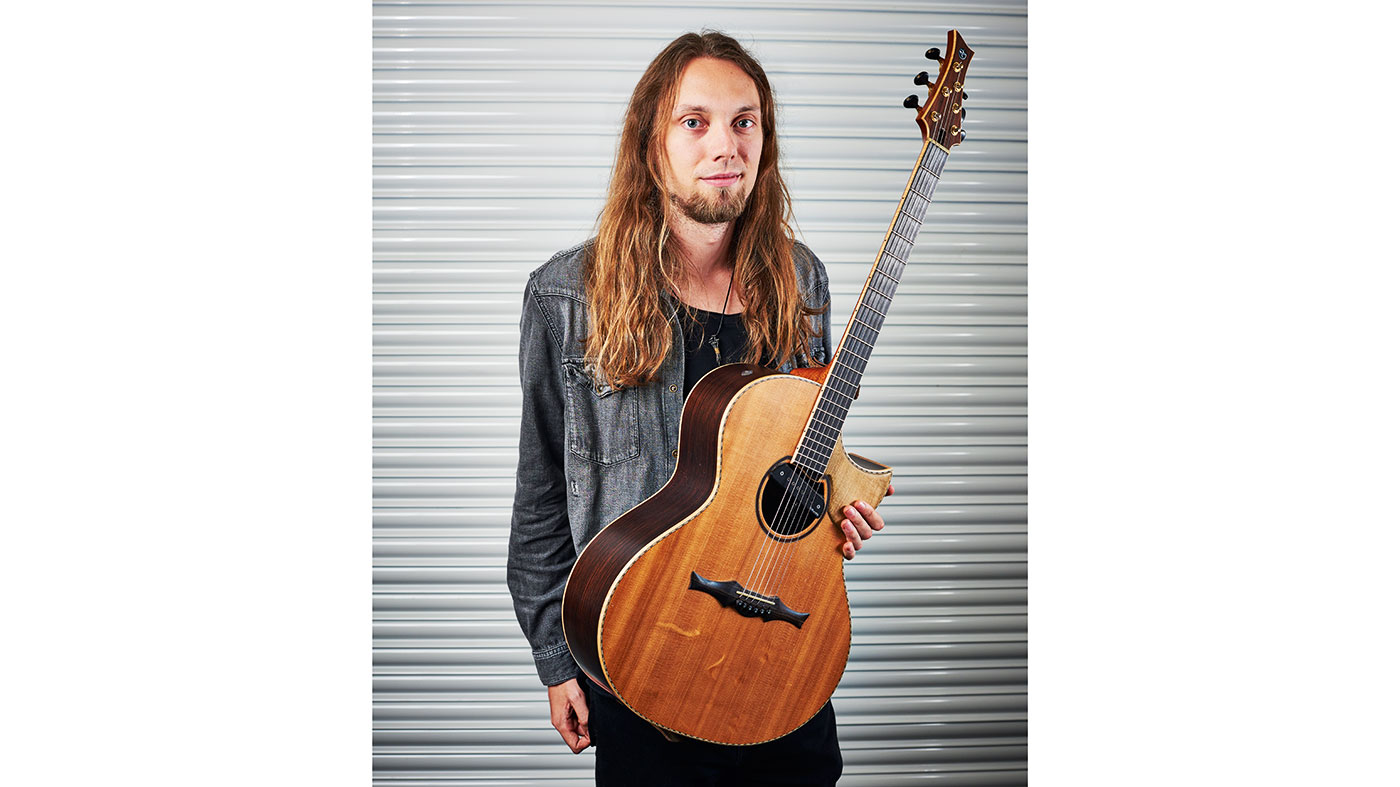Me and my guitar: Mike Dawes
Dawes discusses his Andreas Cuntz acoustic
Mike Dawes shows off a custom German-made model fit for an acoustic fingerstyle maverick.
“This is my signature guitar with a maker in Germany, called Andreas Cuntz. An amazing independent builder from the south of Frankfurt. This is a modification of his Indian Rose [CWG23s+] model, it’s available as the Mike Dawes model and there are a few things that make it a bit different.”
Wood
“Here we have Indian rosewood back and sides with beautiful quilted maple binding. A 38-year-old sitka spruce top and there’s beautiful bearclaw and some grain visible as well. There’s a very minimalistic Indian rosewood rosette.”
Four pickups
“Electronically, there are four pickups with this guitar. It’s a little bit unusual as there’s a lot more stuff going on inside the guitar than most regular steel string guitars. We have a DiMarzio piezo that’s stuck under the bridge plate - it’s called a Black Angel piezo, and that’s twinned with a microphone that’s inside just to pick up the peripheral percussion. Then we have a little transducer - that’s to pick up the kick drum [percussion] when I do back thumping.

Mike Dawes: this is how I arranged Metallica's One for one guitar
“Because the top is very thick and reinforced for percussive playing I’ve got a separate pickup in there EQ’d and compressed like a kick drum with a limiter on it. It sounds terrifyingly huge when you’re playing in a venue with a good sub system.
“Then there’s this magnetic soundhole pickup, myself and Nick Benjamin - a great luthier from England - and Larry DiMarzio, the king himself, actually developed it. It’s passive and doesn’t require a power supply and it has a phase switch built into the pickup.”
Fretboard
“There are no fret markers; I like to have a pretty blank fretboard if possible. Interestingly, the string spacing is actually way thinner than conventional fingerstyle guitar; it’s 44mm instead of the conventional 46mm [at the nut], because I have weird, gangly alien fingers.
Want all the hottest music and gear news, reviews, deals, features and more, direct to your inbox? Sign up here.
“I like that this is sort of the electric guitar players’ acoustic guitar. That’s how I imagined it. The neck is very thin and the action is incredibly low so any electric guitar player that picks up this guitar instantly falls in love with it.”

Tuners
“The tuners are Gotoh 510s, which are my favourite tuners in the world; I’ve been touring with them for many years and I’ve never had a break or anything like that.”
Nut
“There’s no bend at the nut here - the strings go completely straight to the machine heads, which is very cool, so there’s no break in the tension and the strings can hold their tension at lower tunings. I’ve got some stuff where [the low E] goes all the way down to G sometimes, or A and A b but it holds really well.”
Strings
“The strings are D’Addario nickel bronze and the gauges are a little bit weird; they’re half of a set of 12s and half a set of 13s. So we have 0.013, 0.017 and 0.056 from the set of medium 13s, and then 0.024, 0.032 and 0.042 from the thinner set. The idea is that this is the perfect set for DADGAD tuning. That’s why the strings that are dropped down need to be thicker.”
Scratch pad
“Some people ask me what this is. It’s a little extra bit at the top with some more sitka spruce, but I’ve had it put on untreated as a little scratch pad to use as an effect.
“It’s actually the same wood as the top and the reason it works is because as you’re scratching, the soft bit of the spruce gets worn away and that’s what creates that shaker [sound] effect. If you were in the Dominican Republic you could play merengue music with it, for example. And I have seen a lot of people use different types of wood for this, but I’d recommend spruce because you have that grain when you need it.”

Rob is the Reviews Editor for GuitarWorld.com and MusicRadar guitars, so spends most of his waking hours (and beyond) thinking about and trying the latest gear while making sure our reviews team is giving you thorough and honest tests of it. He's worked for guitar mags and sites as a writer and editor for nearly 20 years but still winces at the thought of restringing anything with a Floyd Rose.

